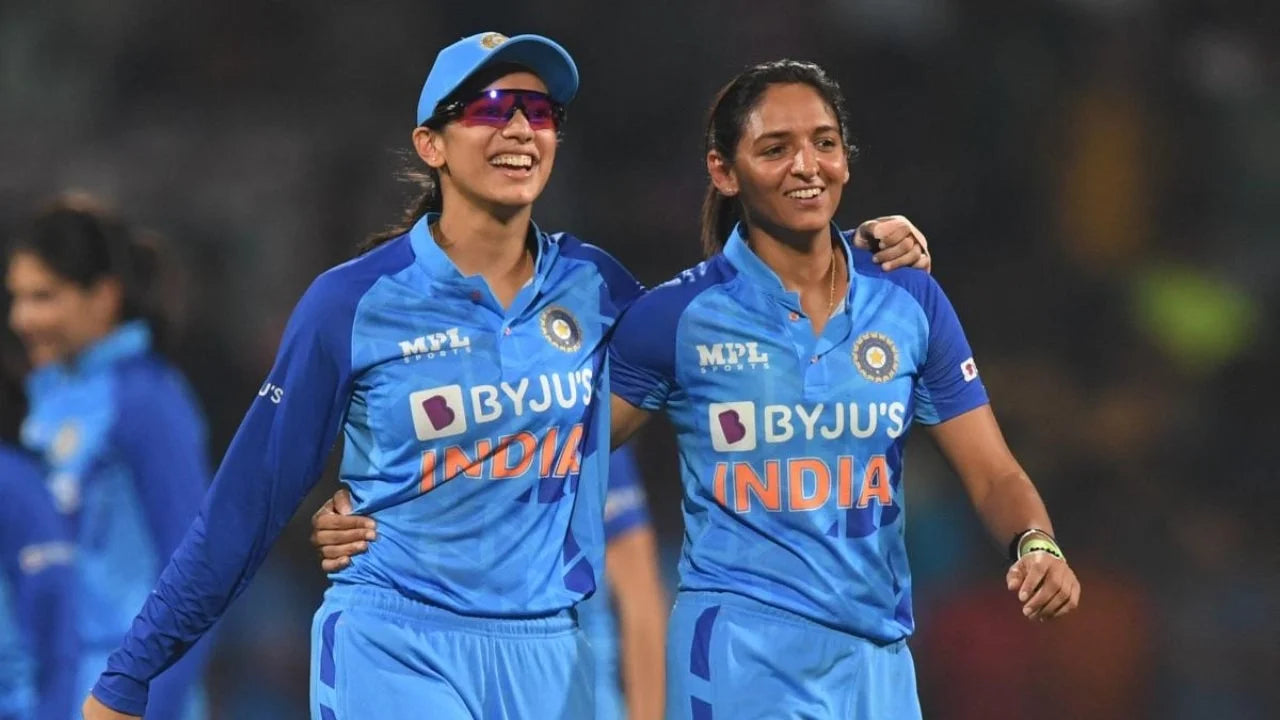Sports are a privilege, it’s a blessing for you to have the ability to do wonders for yourself and make everyone around you proud. And every sport should be undivided in all sense. They provide you the opportunity to express yourself at the grandest of stages and every person deserves this opportunity. So, Let us talk about cricket, a sport that's been around since the 16th century and has brought together people from all corners of the world. From people in Africa playing under the scorching sun to children playing in the gullies in the slums of Mumbai. It's a sport that celebrates collaboration and equality, offering an equal playing field to people of all genders, social class, races, and religions. In this article, let’s delve on the rise of women’s cricket, their history and their inclusion in the sport.

Credit: The Bridge
Over the years, we have seen so many great females participating in our beloved sport. They’ve smashed through all the stereotypes and have emerged as legends, inspiring not only the younger girls, but also the boys out there who aspire to do big for themselves. Players like Mithali Raj, Jhulan Goswami, for what they have done for the Indian Women Cricket Team and achieved in the sport puts them in the same bracket as Sachin Tendulkar, Virat Kohli and MS Dhoni whenever we have the conversation of The Greatest ever players that India has produced. That’s the kind of influence such players have had on the and on the society as a whole. These players are the epitome of equality and excellence in the sport, proudly standing tall as the flag bearers of Women's Cricket!
The Past:
To understand about the history of female inclusion in the sport, we first need to understand the history of the sport as a whole.
Cricket has been around for more than 300 years, first played by the children in England with a wooden stick and a ball in a competition of who could hit the ball the furthest. Gradually, the sport evolved into what it is now, with its three different forms- Tests, ODIs and T20s, and has become a modern global phenomenon loved by over 2.5 billion people.
Women’s inclusion in the sport has been around for hundreds of years—more than 250 years to be precise. That sounds way old, doesn’t it?
The records suggest that the first ever match was a village cricket match played between Brambley and Hambledon in the year 1745 in Surrey in England. Though village matches are not official matches and are only played as a pastime activity, the match was a very historic step in development of what has today become a huge sporting industry.

Credit: Wikimedia Images
The Mercury, a newspaper publication, even reported that:
"The greatest cricket match that was played in this part of England was on Friday, the 26th of last month, on Gosden Common, near Guildford, between eleven maids of Bramley and eleven maids of Hambledon, all dressed in white. The Bramley maids had blue ribbons and the Hambledon maids red ribbons on their heads. The Bramley girls got 119 notches(runs) and the Hambledon girls 127. There was of bothe sexes the greatest number that ever was seen on such an occasion. The girls bowled, batted, ran and catches as well as most men could do in that game."
Moving forward, the late 19th and early 20th centuries was the period when female inclusion started gaining traction. The year 1934 is the most historic year, with the first ever Women’s Ashes match was played, and since then the sport has been growing, slowly but steadily.
In 1958, the International Women’s Cricket Council (IWCC) was formed to govern and regulate the sport for females globally and take their inclusion in the sport to the next level by bringing in sponsorships, building a brand, and generating higher revenues for the game. The IWCC had initially done a fantastic job, even organizing the first women’s world cup in 1973, two years before the men’s world cup which was won by the England Team!

Credit: ICC
But later, due to the financial conditions of the council, it had to merge with the ICC in 2005 and since then, the ICC has had the job of promoting and nurturing women's cricket worldwide.
The Growing Popularity:
Recent years have been massive as the ICC has worked relentlessly towards inclusion of more and more females in the Sport. Increasing number of countries have been participating in the Women’s World Cup and are contributing to the growing popularity. The ICC Women Cricket World Cup, which started way back in 1973, is now a huge event, with the latest tournament being held in 2020. The rise of the t20 format also has a huge impact in the growing popularity of the game among females. The format is short, quick and exciting and more and more females are drawn to the games just because of the entertainment that it provides. The Women's T20 World Cup, which began in 2009, has also gained a significant following. The Last T20 world Cup, which was held in the year 2023, had some brilliant moments. Farewell for the two GOATS- Mithali Raj and Jhulan Goswami, along with Australia conquering the title for a record 6 times.

Credit: ICC
Even in terms of parity of payments, the ICC has done a commendable job by announcing equal prize money for both, the Men’s World Cup and the Women’s World Cup which is a huge win for gender equality in the sport. Moreover, more women now have opportunities to play professional sports, with several countries establishing professional leagues for females.
Women’s Cricket in India:
India has taken some huge strides in creating an infrastructure where females too have an equal opportunity to grace the beautiful game. And these steps taken by the BCCI have worked wonders until now. There are so many players who have risen as superstars on and off the field. Shafali Verma is going to be India’s next big thing and is known for her explosive batting. Harmanpreet Kaur, is a brutal striker of the ball, and she reminds us of Virender Sehwag, who also happens to be her idol. Smriti Mandhana has the potential to be India’s greatest ever batsman. Young players like Harleen Deol, Jemimah Rodrigues, Deepti Sharma are all some amazing players and have the abilities to lead the team into the right future together.

Credit: The Quint
India had recently been to the World Cup final where they lost against England and a final where they lost to Australia. Even though these losses hurt the nation a lot, they were progress in the right direction and were one of the best moments in women’s cricket in India.
Women's Cricket Leagues:
Franchise cricket has brought unreal numbers and revenue to the sport. With T20 leagues like the IPL, where people turn up like crazy, it was only right for the BCCI to introduce a tournament for the females as well. The Women’s Premier League that was started in 2023 was a massive success with jam packed crowds in all stadiums to support women’s inclusion in the sport.

Credit: The Indian Express
The WBBL (Women’s Big Bash League) in Australia is another t20 league which has been a huge success, with players from all around the world coming to play in the tournament.
Conclusion:
Cricket, a sport that helps break down barriers and unite people, is crucial for the participation of females. The game is important, but societal influence is also important. Women's engagement in cricket challenges preconceptions and promotes gender equality by presenting equal chances and dispelling gender biases. The advantages to the economy, including the possibility for increased revenue, the creation of jobs, and expansion in the sports sector, are as compelling. It's a paradigm-shifting phenomena that affects culture in general and empowers women on and off the pitch. Sport is a catalyst for change, weaving a tapestry of inclusion, equality, and advancement. It is more than simply a sport.



Share:
How are Cricket Balls Made, Who Invented them and their Evolution?
Asian Cricket Council (ACC): Pioneering Cricket Development
2 comments
Your website presentation is excellent. Thanks to giving information
https://allaboutcricket.lovestoblog.com/
Your website presentation is excellent. Thanks to giving information
https://allaboutcricket.lovestoblog.com/